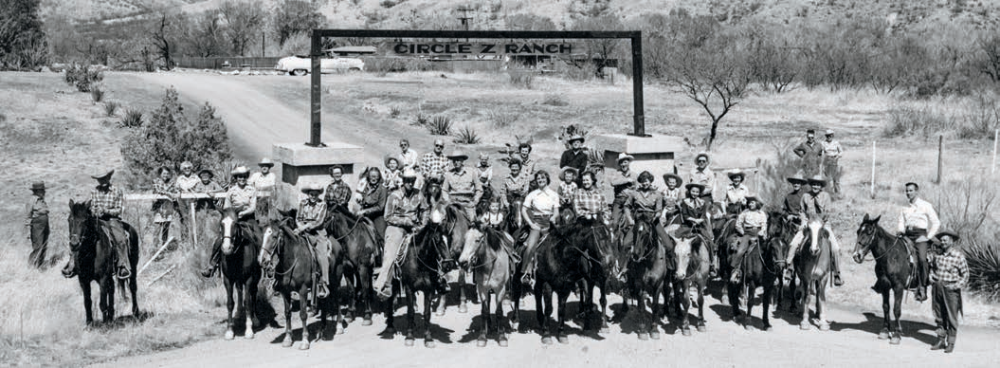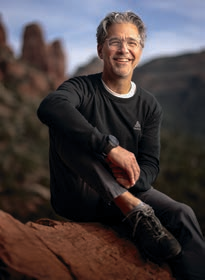Editor's Letter

My grandmother wrote a book about a 9-year-old and her horse. It’s sweet, like The Black Stallion, and it’s loosely based on my aunt, who wasn’t much older than me. I can’t remember the names of her real horses, but I remember watching her ride, and thinking she looked like a movie star — the kind of dark-haired maiden who would have stolen the heart of a love-struck Little Joe. Like her horses, she was beautiful. And riding was her first love.
“Riding a horse is not a gentle hobby,” Emerson said. “It is a grand passion.”
I have a daughter who embraces that. She’s passionate about horses. And like my father’s sister, she’s a beautiful rider who’s happiest on the back of a thoroughbred or a Belgian or an old paint. Any horse. She started riding, English style, when she was 10. Like all beginners, she learned about leading, grooming and tacking up. Mounting and dismounting. And she learned how to post and canter. She made thousands of laps around the ring, and beamed with every step. But in the same way that a Big Wheel eventually gives way to a Peugeot PX10, she’s ready for more speed.
“Dad,” she said, “I want to start barrel racing. I want to feel the power. And I want to fly.”
Barrel racing is an equestrian sport that’s rooted in the Western discipline of riding, which is much different than English — more practical. It’s what most people think of when they think of horseback riding in Arizona. And it’s the carrot that first lured visitors to our state, everyone from the Pillsburys and Vanderbilts to the Gregersons and Pellegrinis. This month marks a milestone of that beginning.
In November 1925 we announced the opening of the state’s first official dude ranch: “Of interest is the anticipated establishment of a ‘Dude’ ranch in the vicinity of Patagonia, comprising more than 800 acres in a southerly direction from Patagonia — lavish preparations are now being made. It is understood that construction will be completed by February, in readiness for guests.”
One of the early guests at the Circle Z Ranch, which now stretches for nearly 6,000 acres, was Frank Cowlishaw, an executive for R.H. Macy & Co., the legendary department store on West 34th Street in Manhattan. Although he’d been to Europe many times, he’d never been west of the Hudson River, and dreaded the thought. His wife, however, was determined. “We weren’t even sure Arizona was in the United States,” he said, tongue in cheek. “We were 47 years old and had never been on horses, but there we were, at a dude ranch. A madness came over us. At the end of three weeks, we bought a cattle ranch.” It was just south of the Circle Z.
By the early 1930s, dozens of dude ranches had opened their gates in Arizona, many in an effort to stave off bankruptcy when beef prices were mired in a bear market. Like the brothers in Bonanza, each one had its own personality.
“Some have retained the simplicity of life of the old cattle ranch, while others are the last word in luxury, affording a variety of entertainment,” Mae Cobb wrote in one of so many stories we did about dude ranches in our first two decades. The common denominators were good-natured horses, hot coffee in the morning, roaring campfires at night, fresh beef and beans, glorious winter weather, camaraderie, adventure and dramatic scenery.
“There are the spreading cactus flats, blooming in yellows, reds and purples in a vista that reaches the distant aquamarine hills,” Stan Adler wrote. “There are the calm, imposing canyons with lofty trees as your only companions. There are the gleaming colored reefs that seem to have been painted by some prehistoric giant.”
Sadly, the allure of dude ranching began to fade in the 1950s. Today, the vast majority of the old ranches have shut down. Circle Z, which has been around for almost as long as we have, survives, along with about a dozen others, including Sprucedale, Tanque Verde and Kay El Bar, which became a full-time guest ranch in 1926. I’ve never been, but I’ve driven past it many times, and I know what it smells like, because all ranches smell the same. Especially the horse barns.
I love that smell. That redolent combination of alfalfa, oats and barley. Straw and wood chips. Leather, ropes and liniment. The musky scent of the horses. And even the mild, earthy essence of horse manure. Like the smell of wood smoke in early autumn, the smell of a barn is reminiscent of my rural childhood. And it’s pleasant — the ambrosial masterwork of an equestrian alchemist.
I take my daughter to the stable as often as I can. And when she’s finished riding, brushing her horse and returning the tack, I sit and watch her with a father’s pride. I breathe it all in. Literally. Figuratively. It’s such a simple thing. A timeless routine that doesn’t require Wi-Fi or megabytes.
“Enjoy the little things in life,” Vonnegut said, “because one day you’ll look back and realize they were the big things.”
November is when we take inventory of the big things — it’s built into the calendar. Gratitude, however, extends beyond the fourth Thursday of the month. It does at this magazine. Every day we’re grateful for our readers around the world. To each of you, we are beholden. When you fill out your subscription card, order our license plate, or visit our online store to buy a book or a calendar or a Christmas ornament, you’re helping us live to be another year older.
On behalf of everyone at Arizona Highways, thank you. I wish you all a safe and happy Thanksgiving.
Already a member? Login ».
